Transforming Tactical to Strategic: A Necessary Evolution
In today’s dynamic business environment, organizations face increasing pressure to shift from tactical, day-to-day operations to strategic, long-term management. This transformation affects every organizational function—from resource management and workforce development to procurement and finance—necessitating a fundamental change in mindset, skills, and frameworks. This article explores how organizations can facilitate this journey, emphasizing leadership, soft skills, strategic thinking, and the implementation of best practices to achieve a seamless strategic flow.
Understanding the Need for Strategic Evolution
Why move from tactical to strategic resource management?
Transitioning from tactical to strategic resource management is essential for organizations aiming to stay competitive and foster long-term growth. Tactical management often focuses on immediate needs like filling vacancies or handling day-to-day tasks. In contrast, strategic management aligns talent and resources with future organizational goals, creating a sustainable competitive advantage.
By adopting a strategic approach, organizations optimize not only their current resource allocation but also prepare for future talent needs, technological changes, and market shifts. This shift enables resource managers to influence broader organizational outcomes rather than just operational efficiency.
How do technological and market changes influence this shift?
Rapid advancements in technology—such as automation, AI, and digital tools—transform the operational landscape. Market dynamics evolve swiftly, requiring organizations to adapt their resource strategies continuously. For example, workforce boards must move beyond immediate job placements to creating regional growth visions and future talent pipelines.
Technological integration enables better data analysis, supplier evaluation, and decision-making. It supports strategic sourcing, improves transparency, and fosters innovation with suppliers. Market changes demand agility, prompting organizations to foster collaboration, anticipate future needs, and develop long-term initiatives that prepare them for upcoming challenges.
What role does leadership play in this transformation?
Effective leadership is vital in guiding organizations through this transition. Leaders must embrace future-oriented thinking, set clear visions for growth, and foster a culture of continuous improvement. They need to build skills in relationship management, change management, and strategic planning.
Strategic leaders connect short-term actions with long-term goals, ensuring efforts like talent development, procurement, and financial management align with overarching organizational visions. Leaders also drive innovation by questioning the status quo, encouraging new ideas, and supporting workforce development initiatives like STEM programs.
Strong leadership advocates for collaboration among stakeholders, adapts to technological advances, and addresses systemic barriers faced by marginalized communities. These efforts ensure organizational resilience and sustainable growth.
Soft skills and mindsets vital for fostering organizational transformation
Transforming an organization from tactical to strategic management hinges on soft skills such as adaptability, emotional intelligence, and effective communication. Empathy plays a crucial role, helping leaders and teams navigate change by understanding employee concerns and building trust.
Collaboration and influence enhance teamwork and stakeholder engagement, essential during periods of transformation. A growth mindset—encouraging continuous learning and resilience—empowers employees to embrace new strategies and technologies.
These skills foster an agile, motivated workforce capable of driving sustainable change. As organizations adapt, soft skills serve as the foundation for effective leadership and organizational cohesion.
Developing strategic thinking and decision-making skills
Strategic thinking involves a blend of analytical skills, such as data analysis and foresight, coupled with critical thinking and systems analysis. Leaders and managers should ask insightful questions, challenge existing assumptions, and consider diverse perspectives to formulate robust strategies.
Skills like scenario planning, forecasting, and resource management are essential for translating insights into actionable plans aligned with organizational goals. Formal training programs and continuous learning—using tools like Porter’s Five Forces or PESTEL analysis—enhance strategic capacity.
Good strategists also excel in communication, facilitating clarity and buy-in among stakeholders. They focus on long-term value creation, balancing immediate needs with future priorities. Cultivating this mindset involves reflection, adaptability, and an action-oriented approach, ensuring organizations remain competitive in changing environments.
| Topic | Focus Areas | Examples & Tools |
|---|---|---|
| Transition from tactical to strategic | Aligning talent, long-term planning, stakeholder engagement | Workforce boards developing regional growth visions |
| Impact of technological change | Data-driven decision making, automation, digital tools | Digital supplier evaluation systems |
| Role of leadership | Vision setting, fostering innovation, systemic thinking | Nokia’s supplier collaborations, city of Oulu’s procurement system |
| Soft skills for transformation | Empathy, adaptability, communication, collaboration | Coaching, influence, cross-cultural competence |
| Building strategic thinking | Scenario planning, trend analysis, resource management | Porter’s Five Forces, PESTEL analysis |
Having a clear understanding of the reasons for strategic evolution and the skills necessary to implement it helps organizations navigate their ongoing transformation successfully.
Cultivating Essential Soft Skills for Organizational Change
What soft skills and mindsets are vital for fostering organizational transformation towards strategic management?
Successful transformation within organizations heavily relies on soft skills that foster adaptability, resilience, and effective communication. Notably, empathy is crucial as it helps leaders and employees understand and address concerns during change processes, building trust and reducing resistance.
Further, social skills such as coaching, influence, and cross-cultural competence are fundamental. These abilities enable leaders to motivate teams, manage conflicts amicably, and navigate diverse cultural dynamics, particularly in global organizations.
Critical thinking and problem-solving abilities allow employees to effectively tackle unforeseen challenges that arise during technological shifts or strategic pivots. A growth mindset fosters openness to learning, experimentation, and continuous improvement, which are vital in an ever-evolving business landscape.
In essence, fostering these soft skills creates a workforce that is agile, motivated, and capable of driving sustained organizational change toward strategic management.
Building trust and fostering collaboration during transformation
Trust forms the foundation of successful change initiatives. Leaders should prioritize transparent communication, actively listen to employee feedback, and acknowledge uncertainties openly.
Building collaborative teams encourages knowledge sharing and joint problem-solving, which accelerates the adoption of new strategies. Cross-training and team-building activities further cement trust and cohesion.
Importantly, developing coaching skills among leaders helps nurture talent, enhance individual growth, and promote a culture of support and continuous learning.
The importance of coaching, influence, and cross-cultural competence
Coaching skills enable leaders to guide teams through change, fostering motivation and accountability.
Influence, rather than authority alone, motivates employees to embrace new initiatives and behaviors aligned with strategic goals.
Cross-cultural competence becomes increasingly critical as organizations embrace diversity and operate globally. Understanding cultural nuances enhances communication effectiveness and minimizes misunderstandings.
By investing in these soft skills, organizations can create resilient, innovative, and cooperative environments.
Soft Skills for Leadership Development and Organizational Success
| Soft Skill | Role in Organizational Change | Practical Application | Additional Insights |
|---|---|---|---|
| Empathy | Addresses employee concerns, fosters trust | Listening to feedback, personalized communication | Critical for change acceptance |
| Resilience | Bounces back from setbacks during transformation | Maintaining focus, positive outlook | Essential for sustained effort |
| Social Skills | Facilitates collaboration and influence | Coaching, influencing without authority | Supports team cohesion |
| Adaptability | Adjusts strategies as needed | Staying open to new ideas and processes | Drives continuous improvement |
| Cross-cultural Competence | Navigates diverse team dynamics | Cultural awareness training, inclusive communication | Strengthens global teamwork |
Final Thoughts
Developing soft skills requires deliberate effort and organizational support. Training programs, coaching, and a culture that values emotional intelligence and effective communication can significantly enhance a company's ability to lead successful strategic change. As organizations evolve, soft skills will remain some of the most vital tools in managing complex transformations effectively.
Developing and Applying Strategic Thinking Skills
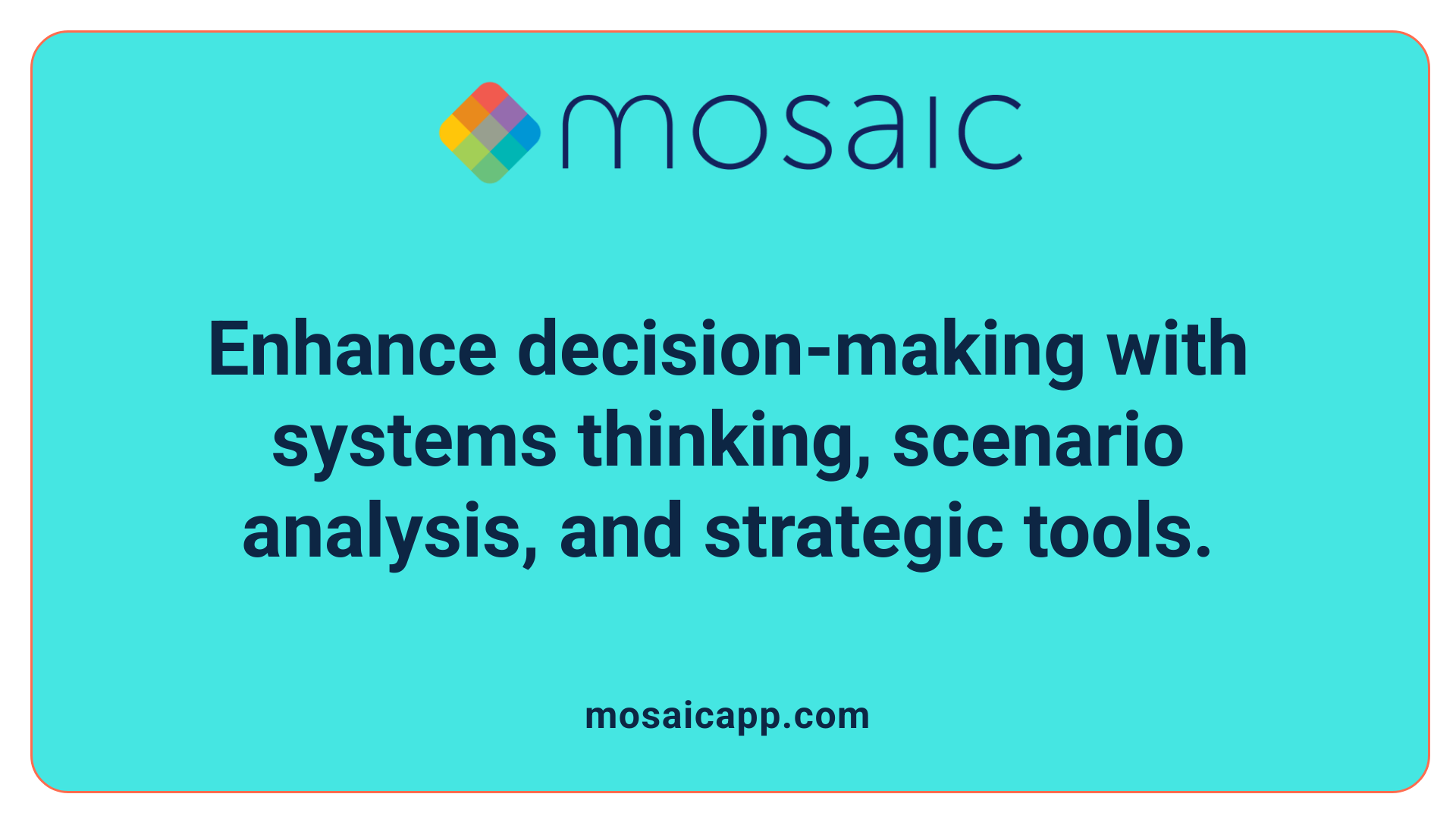
What skills are essential for developing strategic thinking and decision-making in organizations?
Building a strategic mindset within organizations hinges on cultivating a diverse set of thinking skills. These include analytical thinking, systems thinking, and critical questioning, which together enable leaders and managers to see the bigger picture and understand how different parts of an organization or environment interconnect.
Analytical skills involve examining data, market trends, and internal performance metrics to identify patterns and insights. This enables organizations to make evidence-based decisions that are rooted in solid understanding.
Systems thinking adds a layer of complexity, encouraging individuals to view challenges as parts of a broader system rather than isolated issues. This perspective helps anticipate ripple effects of decisions across various departments and market influences.
Critical and strategic questioning are crucial for challenging assumptions and exploring opposing viewpoints. Asking the right questions fosters deeper insights, helping teams develop resilient strategies that are adaptable to changing circumstances.
To translate these insights into effective action, communication skills, planning, and resource management are vital. Leaders must articulate strategies clearly, align resources appropriately, and guide teams through execution while maintaining flexibility.
Utilizing strategic tools like PESTEL (Political, Economic, Social, Technological, Environmental, Legal analysis) or Porter’s 5 Forces provides structured frameworks for assessing external environments and competitive pressures. These tools inform decision-making, helping organizations navigate complex landscapes.
Formal training in strategic analysis, scenario planning, and continuous learning—through workshops, seminars, or case studies—further develops these skills. Practicing these methodologies regularly ensures strategies are thoroughly vetted and adaptable.
Developing a strategic mindset also involves intentional behaviors such as reflection on past decisions, anticipation of future challenges, and proactive behavior to create long-term value. Leaders who think outside the box, question the status quo, and focus both inwardly on personal and team growth and outwardly on market and competitor dynamics tend to foster a culture of strategic excellence.
| Skills and Tools | Examples | Benefits |
|---|---|---|
| Analytical Thinking | Data analysis, performance metrics | Informed decision-making |
| Systems Thinking | Understanding interdependencies within markets | Anticipating unintended consequences |
| Critical Questioning | Challenging assumptions, exploring opposing views | Developing resilient and adaptive strategies |
| Strategic Frameworks | PESTEL, Porter’s 5 Forces | Structuring external and competitive environment assessments |
| Continuous Learning | Scenario planning, workshops | Enhancing strategic agility and foresight |
How can organizations embed strategic thinking into daily operations?
Embedding strategic thinking requires more than skills; it involves creating an environment that fosters reflection, questioning, and long-term planning. Key practices include:
- Allocating time for strategic discussions and planning sessions.
- Delegating routine tasks to free up time for high-level thinking.
- Setting clear long-term goals aligned with organizational vision.
- Regularly reviewing and adjusting strategies based on external changes and internal progress.
- Encouraging a culture of curiosity and openness to new ideas.
By integrating these practices, organizations can transition from reactive tactics to proactive strategic leadership, ensuring sustained growth, adaptability, and competitive advantage.
Integrating Strategy into Workforce Development and HR
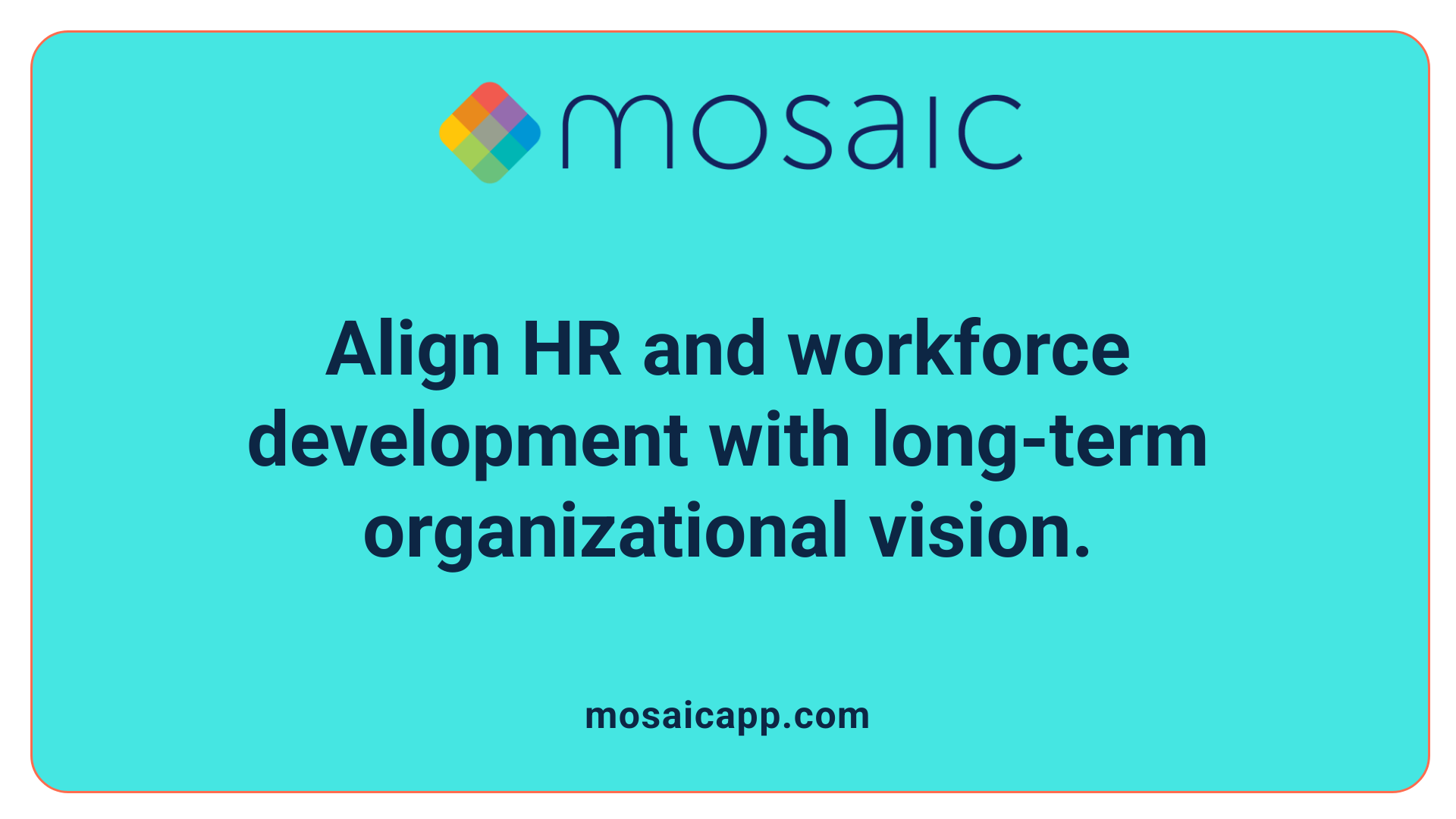
How can strategic practices be implemented and aligned with workforce development and HR functions?
Implementing a strategic approach in HR and workforce development begins with clearly understanding the organization’s overall priorities. Leaders should translate these goals into a specific people agenda that guides talent management, training programs, and workforce planning.
Regular assessment of workforce needs using data analytics helps organizations predict future skill requirements and identify gaps. Incorporating technologies such as artificial intelligence (AI) and human resource information systems (HRIS) enables informed decision-making and enhances efficiency.
Building a culture of continuous learning is vital. Encouraging ongoing professional development, upskilling, and reskilling ensures employees stay relevant and engaged. Performance management systems connected to strategic objectives foster accountability and track progress towards long-term goals.
Talent management models, including succession planning and leadership development programs, align personnel capabilities with organizational growth paths. These initiatives should be flexible enough to adapt to market changes and technological advancements.
Ongoing communication with stakeholders across departments ensures HR strategies remain aligned with evolving business needs. Collaborative planning sessions, feedback mechanisms, and shared performance metrics contribute to this alignment.
By embedding strategic thinking into HR functions, organizations can improve workforce agility, increase employee engagement, and support sustainable growth. HR becomes a strategic partner rather than just an administrative function, directly contributing to the organization’s success.
How does data and technology enhance strategic HR practices?
Data analytics transforms HR from reactive to proactive. By analyzing workforce data, organizations can identify trends, forecast future needs, and tailor interventions precisely. For example, predictive analytics can anticipate turnover risks or high-potential employees.
Technology platforms like AI-driven talent acquisition tools streamline recruitment, improve candidate matching, and reduce bias. Digital dashboards provide real-time insights into key HR metrics, supporting quick decision-making.
HR automation reduces administrative burdens, freeing up HR teams to focus on strategic initiatives such as leadership development and culture building. Mobile and cloud-based systems enable remote workforce management and enhance accessibility.
Furthermore, tracking learning progress through e-learning platforms allows for personalized development pathways and skill assessments. Integrating these systems ensures that continuous learning aligns with strategic priorities.
The use of data and technology fosters transparency, better communication, and more accurate workforce planning. It also supports diversity and inclusion efforts by providing insights that help eliminate biases and promote equitable talent practices.
How can organizations build a culture that supports strategic HR?
Creating a strategy-driven HR culture involves leadership commitment and clear communication of long-term goals. HR policies should promote agility, innovation, and a focus on employee development.
Empowering employees with opportunities for growth, feedback, and participation fosters engagement. Encouraging managers to act as strategic partners in talent development helps embed strategic thinking at all levels.
Recognition programs aligned with strategic objectives can motivate behaviors that support organizational goals. Continuous learning initiatives demonstrate the organization’s commitment to adapting and improving.
Leadership development should emphasize strategic skills such as market awareness, change management, and stakeholder collaboration. Cultivating these skills across the workforce makes adapting to future challenges smoother.
Ultimately, a culture that values strategic HR practices encourages innovation, improves performance, and positions the organization for long-term success.
| Aspect | Description | Example |
|---|---|---|
| Strategic Alignment | Linking HR goals with business priorities | Developing leadership pipelines for emerging markets |
| Workforce Planning | Using data for future talent needs | AI-driven analysis to predict skill shortages |
| Talent Management | Developing and retaining top talent | Succession planning and personalized development plans |
| Technology Utilization | Applying digital tools for HR processes | Cloud-based onboarding platforms and learning systems |
| Culture Development | Fostering a strategic HR mindset | Recognition programs and leadership coaching |
This integrated approach ensures HR functions are embedded within the strategic core of organizational growth and adaptation, making workforce development a true driver of business success.
Shifting from Tactical to Strategic Sourcing and Procurement
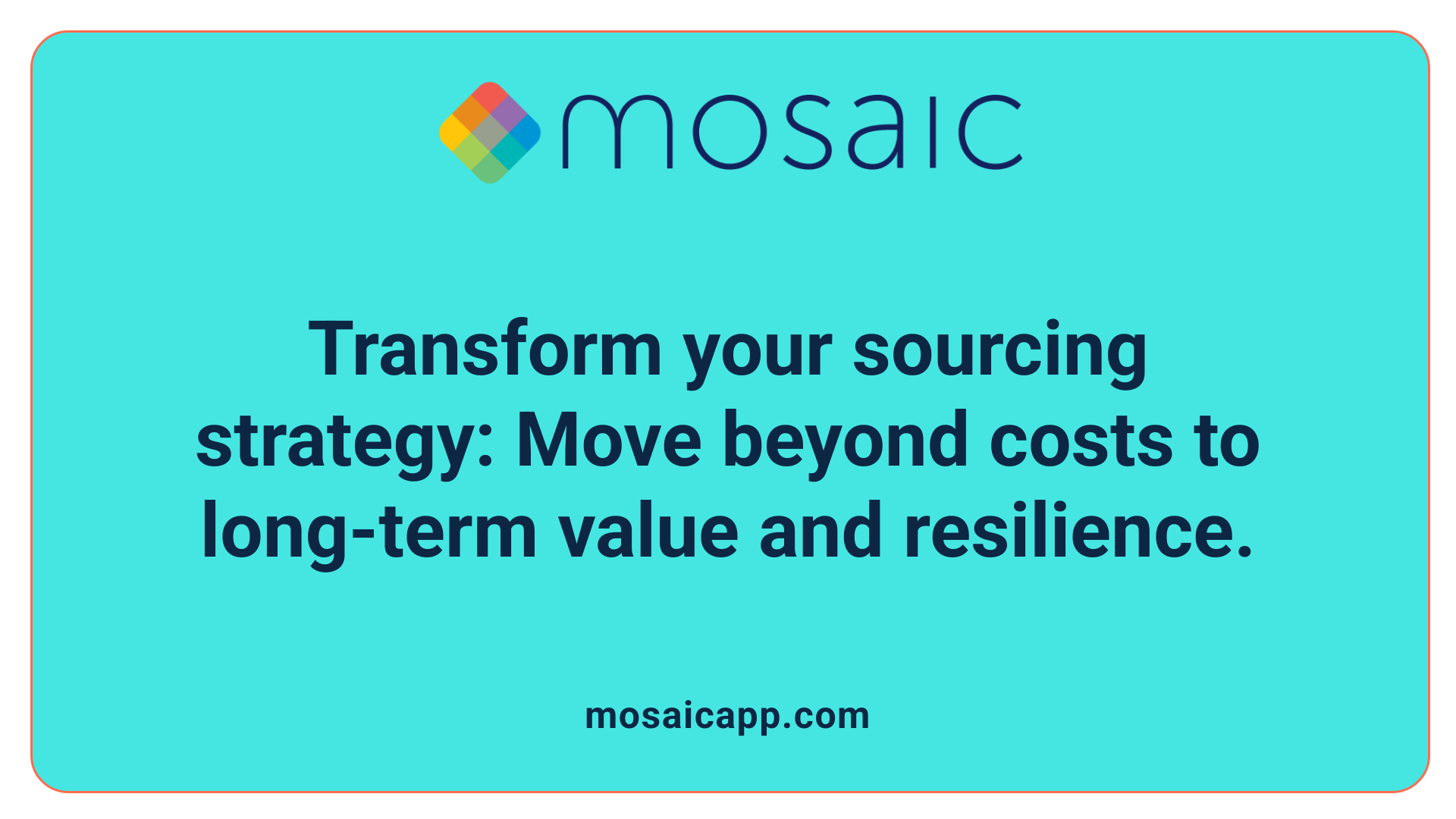
What steps can organizations take to shift from tactical to strategic sourcing and procurement strategies?
Moving from tactical to strategic sourcing is vital for organizations aiming to optimize value and build resilience. The first step involves a comprehensive assessment of current procurement practices and spend categories. Utilizing tools like the Kraljic matrix helps identify which items are most strategic, allowing procurement teams to focus on high-impact areas.
Organizations should develop tailored sourcing strategies, such as multi-sourcing to mitigate risks or nearshoring to improve supply chain agility. This strategic approach emphasizes long-term relationships with key suppliers over simple cost savings.
Embracing data-driven decision-making is crucial. Advanced analytics and digital procurement platforms enable real-time supplier evaluation, market intelligence gathering, and risk assessment. These technologies can identify opportunities for sustainability initiatives, cost reductions, and better supplier collaboration.
Leveraging artificial intelligence (AI) and automation can enhance efficiency by streamlining routine tasks like RFQs and supplier onboarding. These tools support smarter sourcing decisions and allow procurement staff to focus on strategic initiatives.
Sustainable supplier relationships are increasingly important. Developing supplier diversity programs and engagement strategies ensure a broad, resilient sourcing portfolio. Encouraging suppliers to participate in innovation and social welfare initiatives promotes shared value.
Another essential step is fostering ecosystem partnerships. Collaborating with industry consortia or local suppliers can diversify sourcing options and reduce dependencies on a limited set of vendors.
Continuous review and refinement of procurement strategies are necessary to stay aligned with evolving market conditions and corporate sustainability goals. Regular internal training on digital tools and strategic thinking helps procurement teams adapt to changing landscape.
Below is a table summarizing critical aspects of strategic sourcing transformation:
| Aspect | Focus | Details |
|---|---|---|
| Long-term supplier relationships | Building trust and innovation | Partnering for mutual growth, joint innovations, and sustainability initiatives |
| Data-driven sourcing | Analytics and AI | Improving supplier evaluation, risk analysis, and market insights |
| Use of digital procurement tools and AI | Automation and intelligence | Enhancing transparency, reducing manual tasks, and enabling real-time decisions |
| Supplier diversity and sustainability | Broadening base, social responsibility | Promoting inclusive sourcing, environmental practices, and social impact |
Adopting these practices positions organizations to not only reduce costs but also foster resilient, innovative, and responsible supply chains.
Evolving Organizational Functions through Strategic Process,
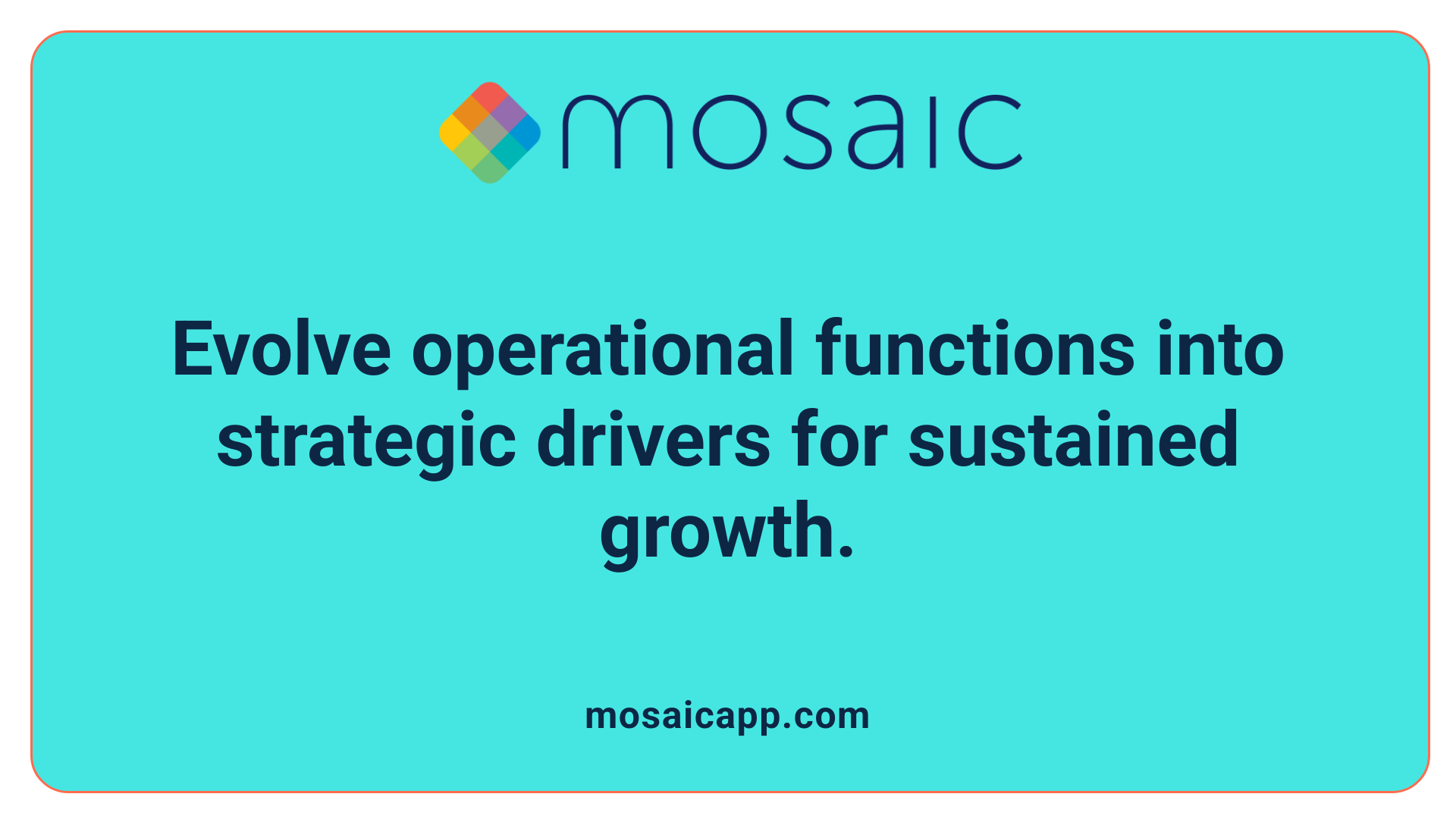
How can organizational functions like finance, HR, and operations evolve from tactical tasks to strategic initiatives?
Traditional roles within organizations—such as finance, human resources, and operations—often focus on day-to-day tasks. To become drivers of long-term success, these functions must shift from tactical to strategic focus.
Embedding strategic thinking into their core processes is essential. This involves redesigning decision-making frameworks to prioritize future-oriented planning, risk management, and value creation. Leadership plays a crucial role in fostering a cultural shift, encouraging teams to look beyond immediate responsibilities and consider how their actions impact organizational goals.
Technology and data analytics serve as powerful tools enabling this transformation. Real-time data allows for proactive decision-making, while advanced analytics identify trends that inform future strategies. These tools help functions anticipate challenges and identify new opportunities, positioning them as partners in strategic planning.
Developing specialized roles and skills is another vital aspect. HR departments, for example, evolve into strategic partners by focusing on talent acquisition, employee engagement, and organizational culture—areas that influence long-term growth.
Operations teams work towards process optimization aligned with strategic objectives, employing methodologies like lean management, automation, and continuous improvement.
Integrating these functions into the larger strategic framework allows organizations to be more agile. They can respond swiftly to market disruptions, technological advances, or shifts in customer preferences.
In essence, moving from tactical to strategic is about breaking down silos. It requires ongoing leadership commitment, investment in capabilities, and a mindset that values long-term impact over short-term fixes.
How do organizations develop specialized roles and skills within their functions?
Building expertise involves targeted training, cross-functional projects, and fostering a culture of innovation and learning. For example, finance professionals need skills in data analysis and strategic forecasting. HR professionals benefit from expertise in organizational development and talent management.
Creating clear role definitions and responsibilities aligned with strategic objectives enables teams to focus on high-value activities. Mentorship programs and continuous learning initiatives help staff acquire the necessary capabilities.
Ultimately, organizations that strategically develop their internal talent pool are better positioned to adapt and thrive in a competitive landscape.
| Function | Traditional Focus | Evolved Focus | Necessary Skills | Strategic Goals | Example Initiatives |
|---|---|---|---|---|---|
| Finance | Reporting & Compliance | Strategic Decision Support | Data Analysis, Forecasting | Long-term Value Creation | Implementing predictive analytics tools |
| HR | Recruitment & Employee Relations | Talent Strategy & Culture Development | Organizational Design, Engagement | Building a resilient workforce | Talent development programs |
| Operations | Process Efficiency | Process Innovation & Automation | Lean Management, Technology Adoption | Sustainable Growth | Implementing smart automation systems |
By aligning core functions with strategic objectives, organizations can transform their operational work into sources of long-term value and competitive advantage.
Frameworks and Best Practices for Strategic Alignment
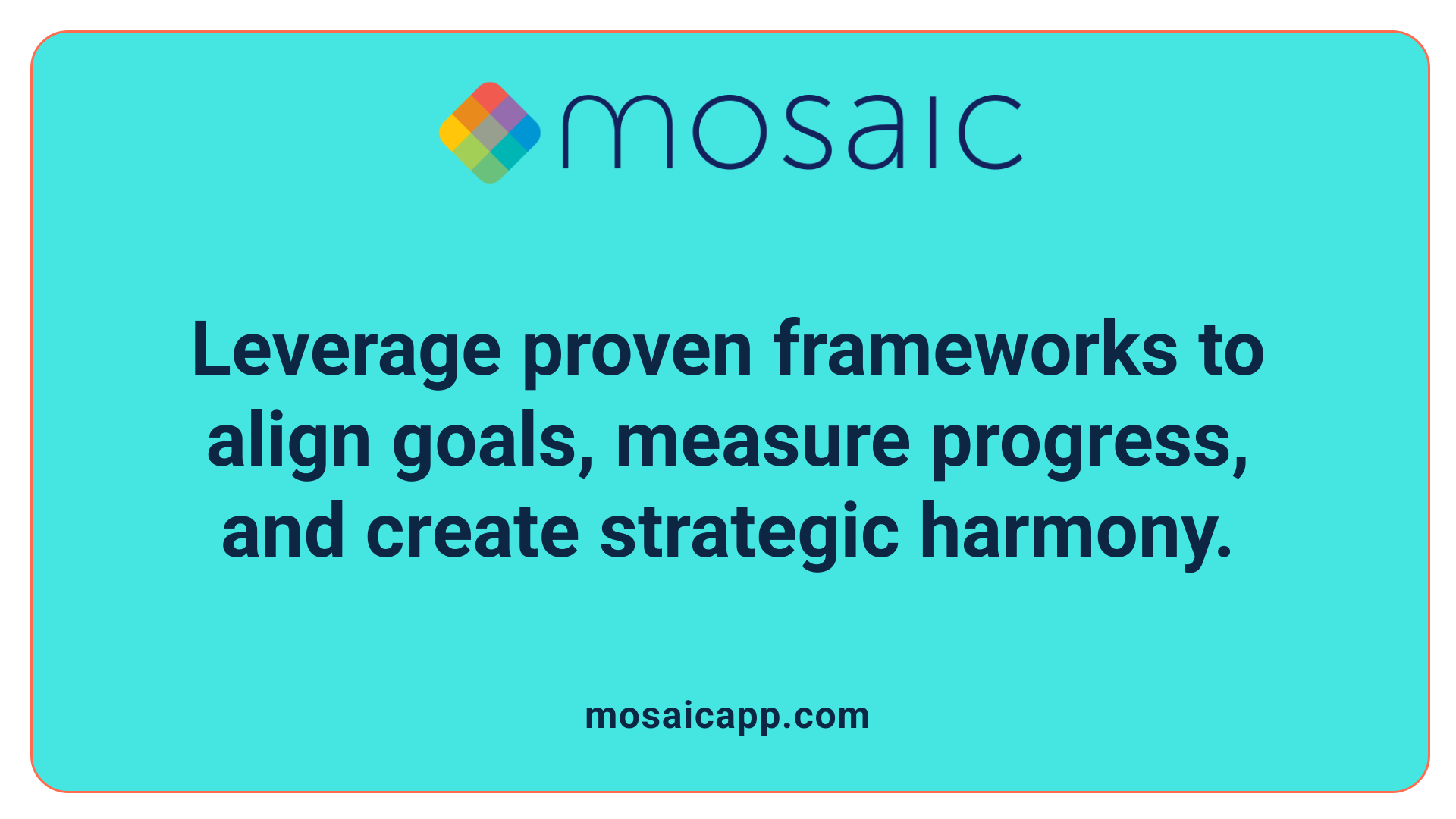
Are there frameworks or best practices that guide organizations toward achieving a strategic flow within their processes?
Yes, numerous frameworks and best practices exist to help organizations create a cohesive and effective strategic flow across their operations. These tools provide structured approaches to analyzing internal capabilities, external market conditions, and aligning resources towards long-term success.
One of the most widely used frameworks is the Balanced Scorecard, which translates strategic objectives into specific performance measures across financial, customer, internal process, and learning and growth perspectives. This ensures that all departments are aligned with overarching goals.
McKinsey’s 7S Model looks at seven interconnected elements—Strategy, Structure, Systems, Shared Values, Skills, Style, and Staff—helping organizations diagnose issues and implement change in a cohesive manner.
External and internal analysis tools like SWOT analysis (strengths, weaknesses, opportunities, threats) and PESTEL analysis (Political, Economic, Social, Technological, Environmental, and Legal factors) allow organizations to understand their environment thoroughly, identifying strategic opportunities and risks.
Building on these analyses, strategy mapping visually plots the cause-and-effect relationships of strategic objectives, making it easier to communicate and implement strategies.
To measure progress and set clear targets, organizations often adopt Objectives and Key Results (OKRs), aligning activities with specific, measurable goals. The 3 Horizons Framework guides balancing innovations and growth initiatives by focusing on short-, medium-, and long-term priorities.
For gaining a competitive edge, frameworks like Blue Ocean Strategy focus on creating uncontested market space, while the Value Chain Analysis identifies activities that add value and can be optimized.
Additionally, disruptive innovation theories help organizations anticipate and lead market shifts, creating sustainable advantages.
How do these tools help organizations translate strategic objectives into operational actions?
Strategy mapping and OKRs serve as bridges between high-level ambitions and day-to-day activities. They break down broad visions into specific projects, initiatives, and performance metrics.
The 3 Horizons model ensures a balanced focus on current operations and future growth, preventing organizations from becoming complacent.
Frameworks like the Value Chain Analysis identify where investments and improvements can generate maximum value.
How can organizations foster a strategic mindset using these frameworks?
By systematically applying these tools, organizations develop a deeper understanding of their competitive environment and internal capabilities.
Regular review sessions using tools like SWOT and PESTEL keep strategies relevant amid fast-changing markets.
Visual strategy maps and clear OKRs foster alignment across teams, turning strategic goals into actionable plans.
What role do these frameworks play in creating a sustainable competitive advantage?
They enable organizations to focus on areas that generate unique value, differentiate from competitors, and adapt swiftly to external changes.
For instance, employing Blue Ocean Strategy helps create new markets rather than battling competitors in existing ones.
The Value Chain Analysis ensures that every activity contributes effectively to downstream value, reducing waste and improving quality.
Strategies grounded in comprehensive analyses build resilience, foster innovation (through disruptive innovation concepts), and sustain growth over the long term.
| Framework/Tool | Focus Area | Practical Application | Benefits |
|---|---|---|---|
| Balanced Scorecard | Performance measurement | Align KPIs with strategic objectives | Well-rounded view of organizational health |
| McKinsey 7S | Organizational alignment | Diagnose and implement change | Cohesive internal systems and culture |
| SWOT & PESTEL | External/internal environment | Environmental scanning | Opportunity recognition and risk mitigation |
| Strategy Mapping | Visual strategy communication | Cause-and-effect visualization | Better stakeholder understanding |
| OKRs | Goal setting | Translate strategies into measurable results | Increased focus and accountability |
| 3 Horizons | Innovation & growth | Balance initiatives over time | Sustained long-term growth |
| Blue Ocean | Market space creation | Identify uncontested markets | Reduce competition and enhance differentiation |
| Value Chain Analysis | Activities and processes | Optimize key activities | Enhanced efficiency and value delivery |
| Disruptive Innovation | Market shifts | Anticipate and lead change | Long-term market leadership |
By integrating these frameworks into their strategic planning processes, organizations establish a dynamic, adaptable, and aligned approach that fosters sustainable success, competitive differentiation, and resilience amid shifting markets and technological advances.
Embedding Strategy into Organizational DNA
Achieving a seamless transition from tactical resource moves to strategic flow demands a comprehensive approach that integrates leadership, soft skills, strategic thinking, and robust frameworks. By fostering an organizational culture rooted in continuous learning and adaptability, organizations position themselves to navigate complexity, seize long-term opportunities, and foster sustainable growth. Success hinges on aligning all functions—resource management, workforce, procurement, finance, and operations—within a cohesive strategic framework. The transformation is iterative, requiring ongoing evaluation, skill development, and agile responses to changing market dynamics. Ultimately, organizations that embed strategic principles into their core will unlock higher efficiency, innovation, and resilience—paving the way from tactical firefights to strategic foresight.
References
- From aTactical Resource Manager to Strategic ...
- Moving from Tactical to Strategic Leadership in Workforce ...
- From tactical to strategic sourcing: Beyond daily battles ...
- Moving from Tactical Thinking to Strategic Leadership
- From tactical to strategic finance: Aligning people, process, ...
- 8 Strategic Planning Frameworks to Achieve Your Goals
- Top 10 Strategic Planning Frameworks & How to Use Them


